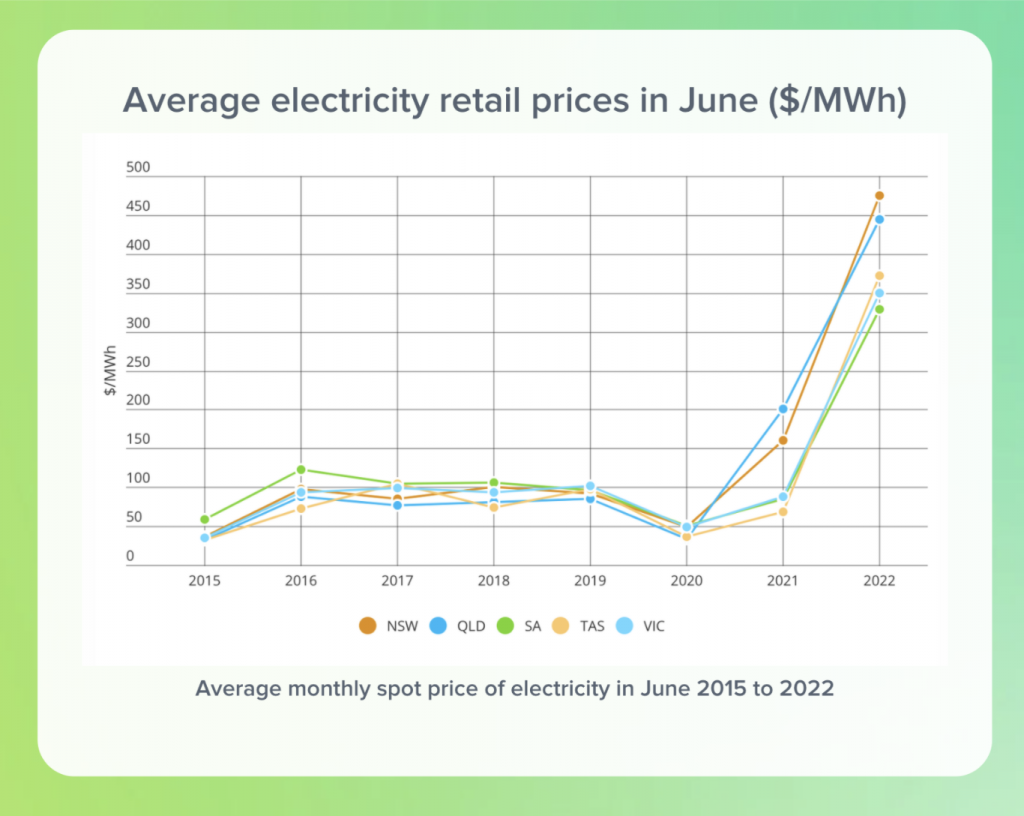Here’s how you can reduce your energy bills this winter.

With Australia in the midst of the worst energy crisis in 50 years, Energy Minister Chris Bowden and Treasurer Jim Chalmers have both warned that households are facing the “perfect storm” of limited gas supply and electricity price hikes.
As Aussies brace themselves for a chilly winter this year, many have found themselves spending more time curled up indoors, leading to higher energy usage.
While some frugal homeowners may opt for a few warmer layers, there are other ways to keep warm and comfortable without a rude surprise when it comes to your next energy bill.
Why are we facing an energy crisis?

The first factor to consider is that the wholesale price of power ( essentially what it costs to generate it) has increased five-fold compared to last year. This is predominantly due to the increasing prices of coal and gas in the international markets. As a rule of thumb, wholesale prices usually amount to around 35% of our household bills.
Secondly, Australia’s east coast is suffering from a gas shortage, caused by the high demand for heating and non-operational coal-fired plants during the recent cold weather.
Aussie households are feeling the brunt of the crisis as they dig deeper into their pockets to pay for the increase in prices.
The Australian Energy Regulator has warned that prices for energy could be higher until 2024 and has hiked electricity prices why a whopping 18% in SA, NSW, and QLD last month and a 5% increase in VIC. This has lead some smaller energy retailers like ReAmped to jump ship to another provider unless they are willing to pay double from July 1.
Here’s a summary of the average Aussie energy bill
Before we jump straight into some helpful energy-saving tips, it’s crucial to understand where the average Aussie home consumes the most energy.
Here’s a quick overview of where you can expect your household to chew through power.
Heating and cooling are the highest energy contributors with 40% of bills dedicated to keeping your family and your furry friends warm.
Appliances and equipment, including refrigeration and cooking, take up as much as 33% of your energy consumption.
Water heating contributes to about 21%
Lighting contributes to about 6%
Tips to reduce your energy consumption and lower your bill
Now that you know your household uses roughly 40% of your energy consumption on heating and cooling, it’s a great time to intervene with some simple hacks to save on your bill this winter!
Even the smallest changes in the way you heat your home can lead to extra cash in your pocket come payment time.
- Only heat the rooms you use most frequently – you can reduce the area you heat by closing doors to rooms you’re not using, creating a smaller area to heat so you’ll waste less energy to heat the rest of the house.
- Close your curtains and blinds– shutting curtains or blinds is an easy way to stop heat escaping. Homes with large windows and glass doors can let more than 40% of your winter warmth leak out of your home. Test it out yourself by feeling the difference, hold your hand near the cold glass windows to feel the chill. Pull the curtains shut and watch the temperature of your home increase.
- Keep your thermostat between 18°C and 20°C – did you know that every degree you reduce heat can save up to 10% on your energy use? Another helpful method may be to bring the temperature of your home to a comfortable level and turn off the heating once you’ve reached your desired temperature.
- Keep those steaming showers short – We all love standing in the warm stream of hot water after a long day, however, hot water usage contributes to around 21% of your energy bill, so limiting your shower time can result in big savings in the long run.
- Whip out the door snakes/ drought stoppers – It’s only logical that if cold air is getting in your home, that also means warm air is getting out. Invest in affordable solutions such as door seals, draught-proofing strips, and door snakes to stop heat escaping and save up to 25% by reducing your heating costs.
- Invest in thermal clothing – Rug up with a few smart layers of clothing, including thermals that will help you keep warm no matter where you are. A thermal long-sleeve shirt or thermal leggings can make the difference between turning on the heater and feeling comfy.
- Get your rug on – If your home has hardwood or tiled floors, a nice big rug in the most frequently used areas can help minimise heat loss and help insulate your home.
Be a smart saver this winter
With a whole range of savvy methods to save energy at home in winter, it’s best to start with a quick energy audit.
Start by looking at your own lifestyle choices and your home’s structure – to see where you can save and try out some of the suggestions above to help reduce your energy bill so you can use those extra savings elsewhere.
If you’ve been a savvy saver and are thinking of putting down a deposit for your next home, speak with the Rateseeker team today to get the sharpest rate on your home loan. Simply our website to get started.
** General Advice Warning
The information provided on this website is general in nature only and it does not take into account your personal needs or circumstances into consideration. Before acting on any advice, you should consider whether the information is appropriate to your needs and where appropriate, seek professional advice in relation to legal, financial, taxation, mortgage or other advice.




